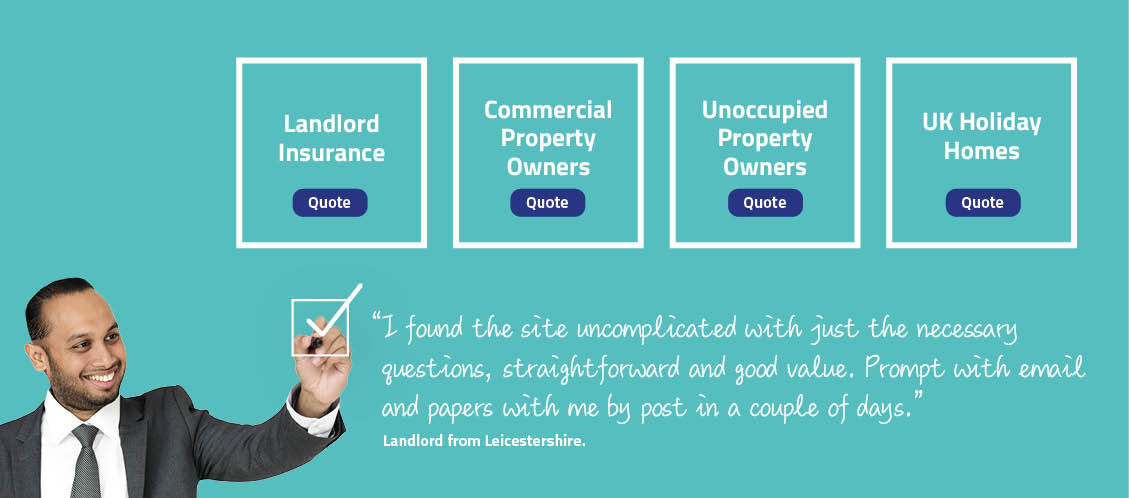Updated November 2022
Contents
Introduction
However good the deal you were able to get when purchasing your buy to let property, it is still likely to represent a considerable investment – one designed to deliver a steady income through the receipt of rents and the longer term appreciation in the capital value of the property.
Having committed to such an investment, of course, it is highly likely that you want to do everything in your power to protect it.
Protection is necessary to safeguard against a number of risks and perils – some of which may be more obvious than others.
Adequate insurance cover for example is the key to protecting your let property against some of the major physical risks capable of causing so much damage that the building is completely destroyed and needs to be built again.
Although the principal object of your buy to let business is to keep the accommodation occupied as continuously as possible by tenants, you may nevertheless still have your own possessions, furnishings and equipment in the property – possessions at the risk of damage, loss or theft.
But there are other, less tangible, threats to your business – such as claims for substantial amounts of compensation if others allege that you have in some way failed in your duty of care as the landlord of the property you own.
Business may also be disrupted by the loss of rental income following an incident which you might well have insured but which nevertheless leaves the property temporarily unsuitable for habitation.
As important as landlord insurance may be, however, there are still a host of ways in which you remain responsible for looking after your let property and helping to ensure that it is sufficiently well protected to minimise the need for any claims.
Included amongst the list of essential measures is caution against theft and other intruders – requiring constant vigilance when it comes to alarms and locks for instance.
But there may be times when your normally let property is also exposed to the particular risks of a vacated building, such as during any renovation or other building works.
Last but not least, this guide also intends to raise a warning about those actions central to the success of your buy to let business – your tenants. What might you do to protect you and your property against tenants who prove to be unreliable in the payment of rent or downright irresponsible when it come to the way they treat the accommodation you have let to them.
The list of hazards faced by the landlord – especially one just starting out – may appear thoroughly daunting. But you are not alone when it comes to making sure that the property is adequately protected. Here at Cover4LetProperty we have the experience and expertise to offer guidance ad advice on a wide range of safeguards to protect the property in which you have invested.
Insurance
As already mentioned, adequate landlord insurance cover offers probably the single most important piece of protection in your armoury of defences as the landlord of buy to let property.
It is also important to note that if you have a mortgage on the property, it will typically be a condition of your mortgage agreement that you have appropriate buildings insurance in place at all times.
It might be helpful briefly to review the way it works by looking at some of the principal headings that form the basis of the typical policy for landlords:
Building insurance
- just as it suggests, this is the element of cover responsible for protecting the actual structure and fabric of your let property – the building itself;
- the total sum insured needs to be sufficient to clear the site and replace the structure if it is so extensively damaged that it must be completely rebuilt;
- one way of ensuring that the building sum insured is high enough is to conduct a valuation of the building costs (clearly, likely to reveal a quite different sum to that for which you purchased the property);
- the Royal Institute of Chartered Surveyors (RICS), has a rebuilding cost calculator that is free to use;
- an alternative to insuring the building or buildings according to the estimated rebuilding cost is simply to choose an insurance policy that provides cover up to a maximum sum;
- the risks typically covered by building insurance include such potentially major threats as fire, storm damage, escape of water, impacts, explosions and vandalism;
- the risk of loss or damage from flooding is typically covered but may attract special conditions – or an increased premium or excess – if your property is located in an area known to be especially vulnerable;
- the Environment Agency publishes a scaleable map showing those areas that are identified as being at particular risk of flooding from rivers or the sea;
- another building risk to which you might want to pay special attention is subsidence – not all policies extend cover to this risk, so if you believe it may be a present or future threat to your property you might want to ensure that it is included in the cover you choose. Some – but not all – let property insurance policies also include subsidence cover as standard (ours do!);
Contents
- your tenants, of course, are responsible for arranging their own insurance for their possessions within the let accommodation, but you may still have items that are yours – especially if you are letting the premises partly or fully furnished;
- landlord’s contents insurance may be extended to cover accidental damage or include malicious damage by tenants, depending on the policy you choose;
Landlord’s liability insurance
- as the landlord and owner of the let property you have a duty of care towards your tenants, their visitors and members of the public – a responsibility for taking every precaution against their suffering an injury or having their property damaged whilst on the premises;
- alleged breaches of this duty of care may give rise to claims for substantial compensation, against which property owner’s liability insurance or landlord’s liability insurance is intended to indemnify you;
- this element of cover typically reflects the high potential value of such claims and is therefore usually set at a minimum of £2 million and it is not at all uncommon for cover to be available up to £5m;
Loss of rental income
- if the worst comes to the worst and you need to shut down the premises because an insured incident has made the accommodation temporarily unusable, there is a risk of your business suffering from the loss of rental income otherwise generated;
- landlord insurance therefore can offer compensation in these circumstances – with maximum payments either set at a predetermined fixed amount or as a percentage of the total building sum insured.
Alarms and locks
You might have all the necessary insurance arrangements in place, but that does not mean you are able to give protecting your let property no further thought – quite the opposite.
As the insured, you still have a responsibility for minimising – or mitigating in insurers’ parlance – the risk of loss or damage. If you fail to acknowledge this responsibility and do not put in place all reasonable means of prevention, in the consideration of any subsequent claim the insurer may decide that there has been “contributory negligence” on your part and reduce the amount of any settlement accordingly.
Particularly flagrant breaches of your duty to take reasonable precautions may result in your insurer declining any claim entirely.
Security measures
Some of the more obvious security measures, for instance, are likely to be the locks you fit on doors and windows and the alarms you may install to detect intruders.
Both security experts and the insurance industry in general recommend a minimum level of security by fitting 5 lever mortise deadlocks on all external doors.
A handy way of determining which windows need to be fitted with locks is, if you are able to put your head through the open window, a locking device is required.
If your let property comes with a garage, the doors to this also need to be kept firmly locked – either with a built-in lock or the use of padlocks and internal bolts.
Glass panels on doors can be particularly vulnerable if someone is trying to break in. If you have a glass panel on your door, consider replacing it with laminated glass, which is stronger. You can also buy a film in a DIY store that you can stick over the glass to make it harder to break.
You might also need to remember that anyone bent on stealing into the property is likely to make the attempt from the rear of the building – since the intrusion is less likely to be noticed. To help thwart such attempts, therefore, the gate to access by the side of the building needs to be kept locked and to be high enough to be difficult for anyone to climb over.
Security alarms and cameras
When it comes to alarms and intruder detection devices, of course, there may be a wide range of possibilities to consider, depending on the nature of your particular let property.
You may wish to have a security alarm installed, Even a “dummy” alarm box mounted on an outside wall may deter a potential burglar.
One increasingly popular measure – since it makes use of current technology at a very reasonable cost – is the use of security cameras. Cameras mounted in the entrance to the building and other common areas may help you to monitor suspicious activity and provide a record of what has happened in the event of a prosecution.
Both indoor and outdoor camera systems are available and may help make you and your tenant feel more secure. Many are wire-free – all you need is an internet connection – meaning that installation can be fairly simple.
It is important to bear in mind that security cameras cannot be installed within the actual quarters let to individual tenants, who are protected by the Human Rights Act to the enjoyment of privacy in their own (rented) home.
Security lighting
Security lighting is also a good way to deter burglars. You can consider outside lights that come on automatically when they detect movement, for example.
You may also wish to provide lights and timer switches for indoor use for your tenants, so that they can give the impression that someone is home even when they are not.
Burglar proof the garden
Obviously, how your tenant keeps the garden is up to them, but you can encourage them to make it burglar-proof by providing a lockable shed and stressing the importance of locking their gardening tools away.
Install strong, high fencing that will make it harder for a burglar to climb and also install gravel around the property to alert those indoors to the sound of someone coming.
Thorny shrubs planted around the property boundaries will also deter burglars as well as low cut trees – giving them nowhere to hide.
Renovation and site security
There may be times when you need to take special care in protecting your let property.
One such occasion is when the premises have been vacated and you are undertaking renovation or other major building works.
You can watch our short video on Landlord Renovation Insurance here.
When your property is under renovation there are likely to be two main areas of concern:
- empty property insurance – if you take a close look at your landlord insurance policy, you are almost certain to find conditions relating to those occasions when the premises are unoccupied for a number of consecutive days (check out our guide to unoccupied property);
- different insurers allow a vacancy in your property for different lengths of time before classifying it as unoccupied – it may be as short as 30 consecutive days, or in the case of some landlord policies, as long as a few months;
- at some stage during your renovation works, however, the property is likely to be considered unoccupied by your insurer – even if there are tradespeople working there during the day – and as a result, they may impose restrictions on the cover provided or even lift the cover entirely;
- it is important, therefore, to ensure that specialist unoccupied property insurance – such as the policies we offer at Cover4LetProperty – remains in place for the duration of the building works until you are able to let the property once again;
- renovation insurance and site security – in addition to the special provisions attaching to an unoccupied property, you may also want to give thought to insurance for the renovation works themselves and the measures you intend to take to keep the site secure;
- you might need to distinguish carefully, for example, between insurance cover for the existing structure of the building and any cover you need for the renovations or extensions made;
- in addition, thought needs to be given to keeping an inevitably busy and potentially dangerous building site in good order, safe for its workers, secure against the possible theft of materials or plant, and as inaccessible as possible to vandals and other intruders.
Tenant checks and bad references
The rent you intend to receive from tenants is, of course, likely to be the mainstay of your buy to let business. It is not simply a question of setting the level of rent you believe to be fair and reasonable – but actually to receive it as and when it falls due.
In addition to reliably paying the rent, moreover, you are also entitled to expect that your tenants treat your property with the respect and care which it deserves.
Achieving these ends is largely a question of making sure that you select the right tenants in the first place – through whatever checking mechanisms you have available – and deciding how you might respond to any prospective tenants who produce a bad reference.
Whether you are selecting tenants yourself or have instructed a letting agency to do most of the leg work on your behalf, the following tenant checks form an important part in ensuring the overall protection of the premises and your buy to let business:
- tenants generally know that they are going to be asked for a credit check, so the sensible ones are going to be more or less confident of a favourable rating before putting at risk any fees or charges they have already paid over;
- you are likely to consider a check with one of the credit reference agencies an essential part of the tenant selection process;
- proof of identity, preferably with a photograph, is also important;
- don’t forget that you are now legally required to carry out Right to Rent checks
- if the applicant is in employment, you may ask to see proof of that employment (a pay slip, for example) or an employer’s reference;
- if the applicant is claiming benefits, you may want to see the letters confirming that fact from awarding agency or agencies;
- references may be taken up from previous landlords, or where these are not available – from first-time renters or students, for example – references from family or trusted friends.
Conclusion
Protecting the property in which you have invested, with the intention of running a successful buy to let business, is likely to be an important consideration for any landlord.
Probably the single most important point in arranging that protection lies in the shape of landlord’s insurance, which covers a number of important headings – any one of which might prove financially devastating in the worst case scenario.
Because of your continuing responsibility for taking all reasonable precautions for the mitigation of any loss or damage, however, you may still want to keep uppermost in your mind the need for alarms and locks – the fitting of which may even earn you a discount on the premiums you pay.
There may also be times and circumstances – when the property is unoccupied during major renovations or other building works – when additional measures need to be taken to protect your property.
Finally, a few prudent and common-sense precautions in the way you select tenants may protect you and your buy to let business from problems further down the road.







